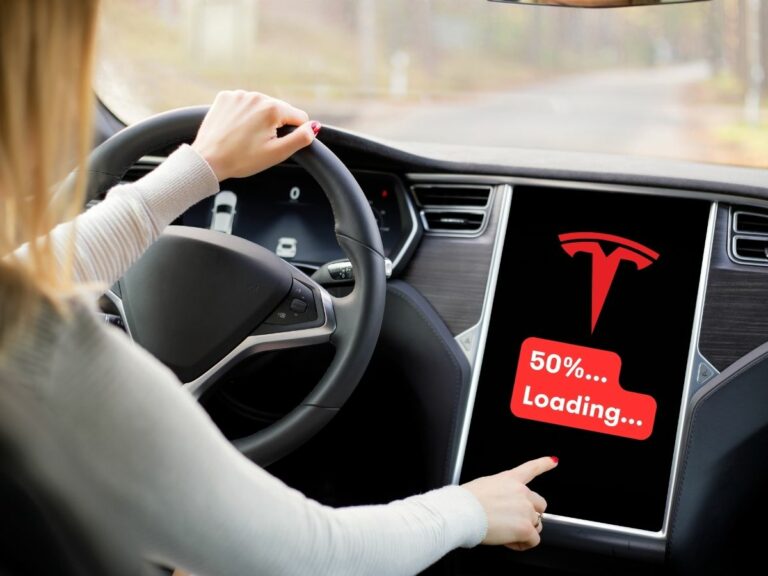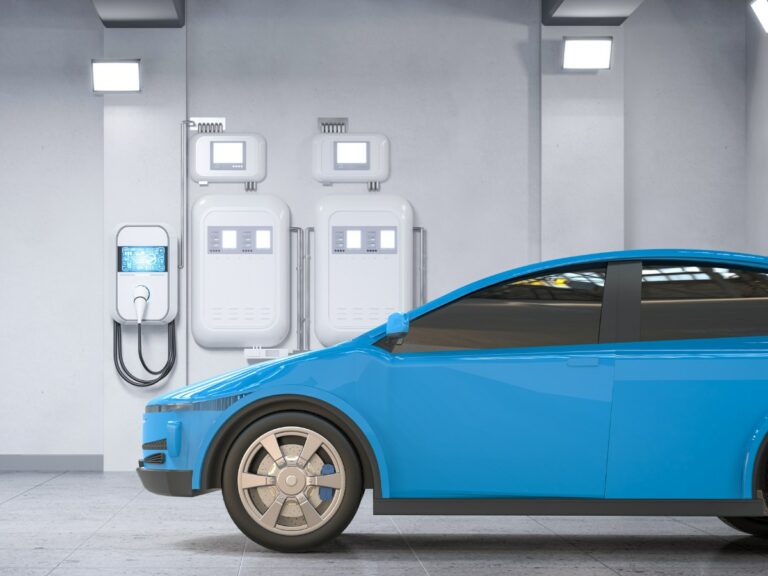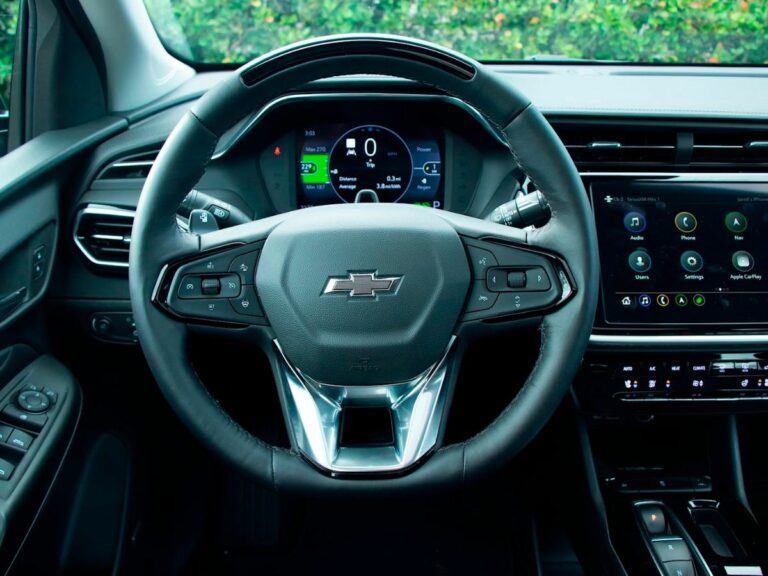Can Electric Cars Drift? (Surprising Answer)
The electric vehicle (EV) wave is surging, and I’m riding it with gusto! I might’ve raised an eyebrow if you had told me a decade ago that I’d be parking an electric car in my driveway. Yet, here I am, not just driving one but also penning down my thoughts about these marvels.
The motorsport arena has always been dominated by the roar of gasoline engines, with drifting sitting as one of its exhilarating spectacles. But as an EV enthusiast, I’m sure many of you have wondered just as I have: Can electric cars bring that thrill to the drifting world? And, more importantly, can they drift?
Well, let’s gear up (metaphorically, because EVs don’t have gears!) and dive deep into this electrifying query. Stay with me, whether you’re an old-school petrolhead curious about the new electric frontier or an EV lover looking to satiate your adrenaline cravings.

The Basics Of Drifting
Drifting is not just about turning a car around a corner. It’s an art, a dance between a driver and their vehicle, a controlled slide that sends hearts racing and tires screeching. But before we plug into the electric side of things, let’s break down what drifting truly is.
Simply put, drifting is the act of intentionally oversteering a vehicle, causing a loss of traction in the rear wheels or all tires, while still maintaining control and driving the car through an entire corner. It’s like ice skating but with rubber and asphalt.
Historically, the roaring engines of ICE vehicles provided the backdrop to many drift events. These vehicles use throttle control, clutch kicking, and shifting to initiate and maintain drifts. The engine’s rev, the raw power delivery, and the symphony of exhaust notes are all integral to the traditional drift experience.
What Makes a Car Good for Drifting?
Several factors determine a car’s ability to drift with finesse, and they include;
- Weight Distribution: Ideally, a near 50/50 weight distribution between the front and rear is sought after, allowing for better balance during a slide.
- Power Delivery: It’s not always about sheer power. Instead, it’s how that power is delivered to the wheels, helping initiate and maintain the drift.
- Rear-Wheel Drive (RWD): While it’s possible to drift with front-wheel and all-wheel-drive cars, RWDs are preferred for their ease of breaking traction and greater control during a slide.
- Suspension Setup: A balanced setup is key. Too soft, and the car might not be responsive. Too stiff, and it might be too challenging to control.
Can Electric Cars Drift?
They can! Electric vehicles, with their immediate torque delivery and unique weight distributions, can certainly drift.
While they bring a different flavor to the drifting world – characterized by silent power slides and distinctive handling dynamics – they’ve proven to hold their own against traditional internal combustion engine drifters.
However, like all things, it’s a blend of the machine and the driver. With the right knowledge, technique, and occasionally some vehicle modifications, electric vehicles can not only drift but also deliver a performance that’s both exhilarating and future-forward.
Electric Cars And Their Unique Characteristics
Switching gears (again, metaphorically!) from the familiar realm of gasoline engines, let’s venture into the electric avenue. Electric cars are not just your everyday vehicles with an electric heart. They have distinct features that could redefine the rules of drifting.
1. Torque from Zero RPM
One of the most notable features of electric motors is their ability to deliver maximum torque instantly from a standstill. This is unlike traditional gasoline engines, which need to rev up to reach their torque sweet spot. This instant torque can be a game-changer for initiating drifts.
2. Weight Distribution and the Role of Batteries
Many electric cars have their batteries placed low and often spread out across the vehicle’s floor. This design choice offers a low center of gravity, which can benefit stability. However, it also introduces a unique weight distribution that might influence drifting dynamics.
3. Immediate Torque Delivery and Its Implications
The immediate power electric vehicles bring is nothing short of thrilling. Step on the accelerator, and you’re immediately pushed back into your seat. This translates to an incredible advantage for drifting. Imagine not having to wait for the engine to rev to get that desired power slide – it’s there the moment you want it.
4. Challenge of Weight and Balance in EVs
While the low center of gravity aids in handling, the overall weight of electric cars can be a concern. Batteries, the heart and soul of EVs, are heavy.
Drifting requires nimbleness, and the added weight might make electric cars feel a tad more anchored than their ICE counterparts. Furthermore, depending on the model and design, the weight distribution might vary, thus affecting the drift dynamics.

Electric Cars in Drifting
We’ve discussed the science, but how do electric vehicles perform on the actual drift stage? Here, we spotlight a few instances where electric vehicles took to the track, casting aside doubts and showcasing their drift capabilities.
1. Tesla Model 3 Performance
One of the most recognized electric vehicles, the Tesla Model 3 Performance, has found its way into numerous drift events, partly due to its impressive acceleration and power delivery.
With its ‘Track Mode,’ the Model 3 Performance allows drivers to adjust torque distribution, facilitating oversteer to initiate drifts. Its instant torque delivery proves to be an asset, allowing for rapid initiation of drifts. However, some drivers noted the need to adjust their techniques, given the vehicle’s weight and unique power delivery.
Verdict
The Model 3 Performance, while not initially designed as a drift car, showcases that with the right adjustments and driving techniques, electric vehicles can indeed hold their own on the drift track.
2. Porsche Taycan
The Taycan, Porsche’s electric powerhouse, is designed with performance in mind, marrying the brand’s rich racing heritage with modern electric tech.
Its powerful dual-motor setup provides ample torque for initiating drifts. The Taycan’s weight, although substantial, is well-distributed, and its rear-wheel steering provides an added edge in maintaining controlled slides.
Verdict
The Taycan demonstrates that luxury electric sedans can be as exhilarating on a drift track as they are on the open road, although there might be a steeper learning curve for those transitioning from traditional drift cars.
3. Nissan Leaf Nismo RC
Nissan’s Leaf may be known as a practical, everyday EV, but its Nismo RC variant is a race-focused version built with performance at its core.
Sporting a dual-motor setup with all-wheel drive, the Leaf Nismo RC boasts a balanced weight distribution. Its relatively lighter weight compared to other electric drift contenders and its race-tuned suspension make it a nimble contender on the drift scene.
Verdict
The Leaf Nismo RC emphasizes that when electric vehicles are designed with racing in mind, they can not only compete in drifting but also set impressive benchmarks.
These case studies offer a glimpse into the evolving world of electric drifting. While traditionalists might need some time to warm up to the silent drifts, the performances speak for themselves. Electric cars can drift, and they’re carving their own niche in the motorsport world.
In the end, it’s clear: the world of drifting is not solely the domain of roaring gasoline engines. The electric revolution has slid into this space, and it’s here to stay. So, whether you’re a spectator or a driver, prepare to see, hear (or not hear!), and feel the electric drift experience grow and evolve.







